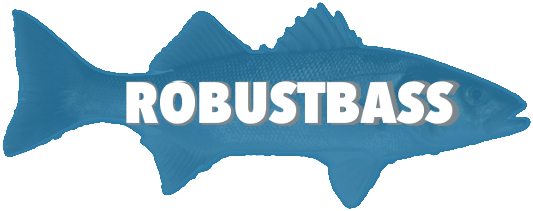|
ROBUSTBASS Project
|
|
Introduction Infectious diseases are, together with feed supplies, probably the main expenses for fish producers. Hence it is of main importance to apply sustainable strategies to reduce the use of therapeutics in the production systems. Genetic improvement in other fish species has shown that well planned family-based breeding programs yield to genetic gains on disease resistance related traits greater than 12% per generation, when relevant challenge tests are applied. But despite the fact that the potential for high genetic gains are well documented for aquatic species, it is known that less than 10% of today’s global aquaculture production is based on genetically improved stock.
|
|
Aim The aim of the current project is to improve the efficiency of European aquaculture by advancing selective breeding to the next level for European seabass (Dicentrarchus labrax) through collaborative research with industry. We aim to provide tools to genetically improve disease resistance and stress response through detailed phenotyping and advanced genomic technologies in the species. Our ambition is to extend this combination of basic and high-tech technological advances in the species and relocate its breeding program to the next level.
|
|
Methodology First, by using hundreds of individuals from the Greek national 'BassGen' project, the expected results are first to obtain thousands of ddRADseq SNPs with high-coverage and sequencing depth that will be mapped along the LGs of the European sea bass genome. While derived from selected individuals, 'RobustBass' will then greatly improve the overall genomic resource available to the aquaculture community in terms of number of SNPs and mapping along the genome. Second, this resource will be especially dedicated to other 'RobustBass' WPs and will have direct application to the characterisation of stress-related QTLs in European sea bass (formerly identified in the 'BassGen' project, and new QTLs to be identified during 'RobustBass'). These QTLs will be a major resource in future comparative studies of farmed fish. We expect to verify and fine map detected QTL as well as identify new ones. These QTL could be used in order to directly test their potential effect on disease resistance, as well as their versatility (robustness) in different environmental conditions (i.e. stress). If results are positive fish could be selected for traits difficult to be recorded (stress response, cortisol levels), disease resistance and moreover, increase accuracy of the Estimated Breeding Values of an existing breeding program. Furthermore, we aim at conducting the first experiments in European seabass for three main disease threats namely vibriosis, VNN-VER and pasteurellosis accompanied at the same time with an acute stress response test. We consider that this constitutes a holistic approach for evaluating the European sea bass robustness. For vibriosis, there is only one study that reports a variant of the interleukin-1β gene in European sea bass, to be associated with increased resistance against Vibrio anguillarum. Using a series of families produced by the commercial partner, our aim is to determine the genetic architecture of resistance using a genome-wide association study (WP4). Since European seabass and gilthead seabream are phylogenetically close, we further plan to conduct a comparative genome analysis aiming at examining the concordance between the QTL detected in the proposed experiments and those in gilthead seabream that will derive from ongoing parallel studies. QTL located in homologous genomic regions for both species will be a great 'proof-of-concept' and is expected to reduce costs in the future when results will be implemented into breeding programs to improve resistance applying genomic selection. Furthermore, this will be the first study to implement parallel genomic and epigenomic approaches at a genome-wide scale. It will provide differential distributions of SNPs and differentially methylated sites along sea bass LGs, and the potential involvement of epigenomic information in detected QTLs responsible for observed variation in the stress response in sea bass. Welfare is especially important in animal production, including fish production and the improved understanding of stress response determinants using “omics” are of particular importance. Finally, we are establishing a training population for the implementation of genomic selection methods. Genomic selection methods can increase accuracy of selection especially in traits of low heritability (i.e. disease resistance), facilitate the selection of traits difficult or costly to measure (i.e. stress resistance). We are assessing possible differentiation at molecular level concerning disease resistance traits and compare between classical breeding program and genomic selection. Last, we will assess gains in accuracy and cost effectiveness of the implementation of genomic selection in aquaculture breeding program. Overall the consortium will build on previous knowledge acquired in past European and National projects to promote basic science but also technical innovations to increase productivity, welfare and sustainability of aquaculture. The overall impact delivered by the project is expected to integrate benefits from research / academia and the production sector. |


